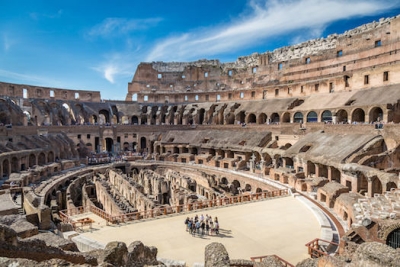
1. A little history
A popular tourist site today and one of the world’s largest sporting arenas, the Colosseum was built between 72 AD and 80 AD by the Roman emperor Vespasian. Though construction started during the time of Vespasian, he did not live to see its completion. His son, Titus opened the arena. The Colosseum is built using stone and concrete and the manpower of tens and thousands of Jewish slaves.
The first-ever games at the Colosseum were held in 80 AD by Titus. It went on for 100 days straight
2. Largest amphitheatre in the world
The oval-shaped Colosseum is the largest amphitheatre in the world. It measures 189m long, 156m wide and 50m high. The arena was so big that it could fit a modern-day football pitch inside. The Colosseum had 80 entrances and could seat approximately 50,000 spectators at a time.
3. Free for all, mostly
Sporting events at the arena included gladiatorial combats, wild animal hunts and naval battles. These games continued to be held for centuries, with gladiatorial combats held till the fifth century, and wild animal hunts till the sixth Most the major events held at the Colosseum, which were often organised and paid for by the emperors, were free for spectators. Sometimes free food was also served to the spectators. Emperors did this to gain popularity and support from the public.
4. What’s underground?
There were numerous rooms and passages below the Colosseum. This is where the gladiators and the animals were kept before they were allowed entry into the arena. The Colosseum also had 36 trap doors for special effects during games.
5. A graveyard for animals
Along with other sporting events, Romans staged wild animal fights and hunts at the Colosseum. This left thousands of animals such as elephants, tigers, lions, bears and other exotic creatures wounded or dead.
Picture Credt : Google

